October Market Update
Ashley Nichols - Oct 10, 2025
Things keep going up, up, up and this month we share some insight on a k-shaped market, valuations, the Fed's effect on our investments and why we still believe in stocks. Read on to see our YTD Performance numbers, and more!

Money is just a tool. It's something that supports your life!
 Portfolio Management Comment
Portfolio Management Comment
So much for Sell in May - and Summer Doldrums
By: Brent Joyce, CFA ® , Russ Visch
Market Insights October 02, 2025
“There are two ways of spreading light: to be the candle or the mirror that reflects it.” – Vesalius in Zante (1902), Edith Wharton, American writer and poet, first female recipient of the Pulitzer Prize for Fiction
Looking at the impressive returns from capital markets in the third quarter, sell in May would have been bad advice (it’s never good advice). Summer markets were definitely not mired in the doldrums.
A few adages are worth remembering: equity markets climb a wall of worry, and they lead earnings, which, in turn, lead the economy.
In Q3, equity markets climbed a wall of worry and negative headlines dominated. Yet, earnings growth (the most potent and healthy fundamental driver of equity market advances) propelled stocks higher. These earnings surprises were global and substantial. They defied the widespread beaten-down sentiment generated by the chaos of shifting and sometimes confusing economic policy (tariffs, industrial policy, legal challenges, immigration changes, and Federal Reserve personnel shake-ups).
The maxim that equity markets lead earnings, which lead the economy, also proved accurate. Corporate earnings surprises have augured an uptick in expectations for future economic growth. Even the OECD, which is always one of the last to revise, has raised its global forecast. These upwardly adjusted growth expectations, coupled with the resilience of consumption, expansion of business investment (capital expenditures), growth of artificial intelligence, data centers, and an infrastructure boom, are fueling a virtuous circle for the economy and capital markets that extends into 2026 and perhaps beyond.
What else remains?
In addition to the further expansion of the virtuous cycle on global economic and earnings growth, we should remember that for several years there hasn’t been much activity in mergers and acquisitions or initial public offerings. These are positive developments in the offing that typically excite equity investors. Add to this low energy costs, fiscal spending across the globe, and U.S. tax cuts set to kick in mid-2026. And there's more: Federal Reserve and Bank of Canada rate cuts are set to continue (the rest of the world is more data dependent). Central-bank rate cuts that coincide with rising earnings-growth expectations have historically been very bullish for stocks. Put it all together and you have a powerful setup for equity markets to thrive.
The K-shaped market
The current equity market is being described as K-shaped; some companies are benefitting and others are not (resembling the letter K). Mega-cap AI technology companies and AI-related sectors (data centers, infrastructure, software and semiconductors) have all been on a tear. Concerns have been raised that their share prices and/or spending are overblown.
Relative laggards make up the downward slope of the K-shaped market. The upside here is more attractive valuations in other sectors, company sizes and geographies. Some of the early wins in this rotation trade have already happened: Canadian, Japanese and European equities have all had a turn with the leadership baton. Valuation gaps have narrowed, yet opportunities remain. Shares of small and medium-sized companies have just started to outperform.
Bubble-talk
We have addressed bubbles several times (most recently see our August Global Markets Commentary and the September 26 edition of Weekly Strategy Perspectives: Bear Hunting), and concluded that if we are in a bubble, it is less contagious than recent prior bubbles. More importantly, we recognize that bubbles are to be expected; what matters is how we investors address them.
It is notable that the extremes in prior bubbles centered on innovation generally saw the shares of companies involved continue to rise even though the rest of the market deteriorated. We’re not seeing this happening today. Yes, mega cap and AI companies are faring well in the markets, but now these market leaders are being joined by a broader range of companies, which is positive. In past bubbles, market leadership narrowed to the few companies focused on the innovation driving market performance.
How do you solve a problem like valuations?
Given the positive backdrop and the extent of the equity market gains, it is natural to worry about valuations and where things can go wrong (the next wall of worry). Average price-to-earnings valuation multiples (P/Es) are currently elevated compared to their historical averages. Assessing investment opportunities on P/Es alone (or even broader valuation metrics) has historically not been a useful timing tool. When the backdrop is favourable and sentiment is positive (as it is today), elevated multiples are to be expected. When speculation has taken hold, valuation multiples rise. But forward-earnings ratios in the S&P 500, which is the most expensive and AI-centric market, are roughly where they've been for the last five years. Notably, for the Magnificient 7, substantial earnings growth has led to lower P/E multiples.
We need to be careful not to paint a picture with one broad brush or be too dogmatic in our thinking. It’s vital to avoid adopting a mentality of "I don't want to invest in the stock market – it's too expensive." What you pay for any asset does matter to your rate of return. But for high-quality assets (e.g., stocks), the longer you hold an asset, the less of an impact the initial purchase price has on your financial well-being. This is especially true for assets that generate income such as dividends, interest and rent.
Broad-based valuation concerns don’t alarm us at this point. Of course, we always want to buy our favourite assets at cheaper prices. We see a constructive backdrop for stocks. Accordingly, if a pullback presents itself we would welcome the sale and be buyers. Our technical analysis suggests that certain areas of equity markets are overdue for a pullback. However, considering the substantial amount of cash sitting on the sidelines, we don't think a sell-off would be particularly large or last very long.
How do you solve a problem like the Fed?
The U.S. Federal Reserve is the topic of many conversations. How much and when will rates be cut? Why cut at all? Where to stop cutting (the terminal, or neutral rate)? And, of course, whether the Fed can retain its independence.
We highlighted the K-shaped equity market; alongside that is a K-shaped economy. Upper-income cohorts are benefitting from the wealth effect (stock markets are up), but lower-income households are disproportionately hurt by weak job creation and moderating wage growth. A K-shaped economy isn't a huge problem for large swaths of the equity market. Households in the top 20% income bracket generate approximately 60% of total consumption. Unless and until overall economic growth slows precipitously and unemployment rises meaningfully, the equity market won't worry about the lower-income cohorts. Indeed, these folks are the Federal Reserve's problem – a problem it will address by lowering interest rates, which will be a happy event for them and stocks, too.
Like many situations this year, when it comes to Fed independence, being patient and taking a wait-and-see approach has paid off. Investors panicking over Fed independence have learned that shifts at the institutional level occur at a glacial pace. New faces at the Fed have been absorbed with little incident, and many members of the institution are publicly reaffirming the necessity and benefit of independence. The Fed’s structure was designed to thwart outside pressure and interference (multiple locally appointed presidents, rotating governors, rotating voting rights, to name a few bulwarks). History notes many attempts by a variety of administrations to pressure the Fed; the situation today feels over-sensationalized because of social media.
Equity market nirvana
There is a lot for investors to like about the current environment, one in which the economy is performing reasonably well, but employment remains weak enough to temper wage inflation and prompt central banks to ease monetary policy. Central-bank rate cuts that coincide with rising earnings-growth expectations have historically been bullish for stocks.
Composite Sentiment Indicator hits a new cycle high
– Russ Visch, CMT Technical Analyst
Through the first nine months of 2025, equity market performance has been impressive and broad-based. The MSCI Emerging Markets Index is up 25%, the MSCI EAFE Index (Europe, Asia, Far East) is up 22%, the S&P/TSX Composite is up 21%, and the S&P 500 is up 14%. The bond market is likewise back on track, delivering a risk-appropriate 1.5% for Q3, bringing the year-to-date return to 3%.
The long-term trend for U.S. equity markets remains positive, accompanied by steady improvement in all aspects of our medium-term timing model. One area that bears mentioning this month is our Composite Sentiment Indicator, which just hit a new cycle high at the end of September (Chart 1). A major reason for the uptick in that gauge was the biggest one-week jump in the number of bulls in the AAII Sentiment Survey of U.S. retail investors since January. The fascinating part is that despite the greatest six-month rally in the S&P 500 in more than five years (and the Nasdaq Composite rallying more than 50% in that time), fewer than half of the respondents in the AAII survey are actually bullish. Given the recent price action, this is particularly striking. We’re certainly not seeing the rampantly overenthusiastic extremes that usually accompany major market tops.
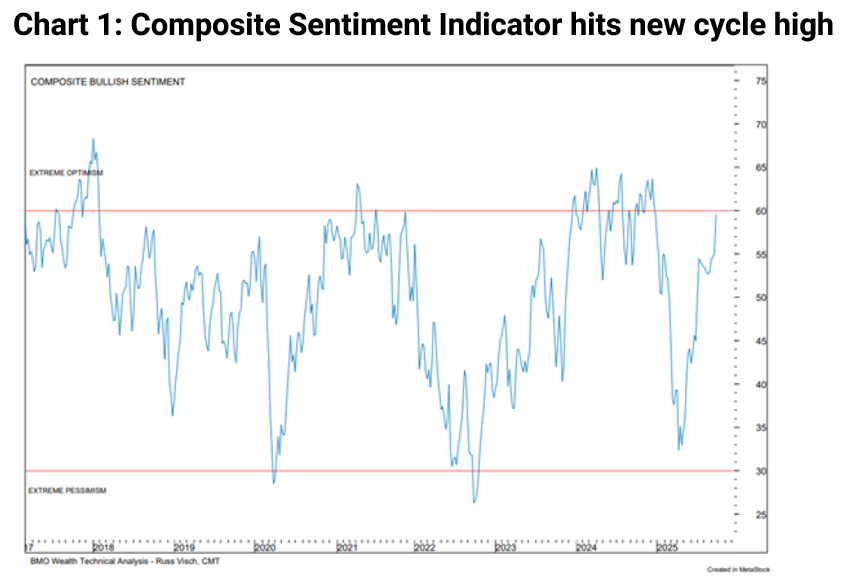
The last word: Why we believe in stocks
We hear common concerns: How will tariffs, inflation, and the U.S. government's large deficits impact my investments? In our view equities are a good hedge against the negative impact of all of them.
Tariffs: Fed Chair Jerome Powell describes tariffs as a one-time shift in prices, but not all at once. This is a scenario where corporations adapt to tariffs over time, but eventually become profit maximizers and pass on at least some of the tariffs to consumers. If “one-time, but not all at once” dampens the impact and spreads it out over time, in due course the tariffs will simply become the consumption tax they always are.
Inflation: Inflation can stay elevated provided it doesn't go too high (which would be north of 3% for more than a month or two). Despite the Fed's inflation target of 2%, since the 1990s inflation has chronically undershot and overshot that target for extended periods, with an overshoot of around 2.6% being the most common. Clearly, the U.S. economy can run smoothly with inflation above 2%; that's important because it is likely to remain that way for a while. Equities are a good inflation hedge because companies are a part of the inflation mechanism. If companies aren't raising prices, inflation doesn’t happen. Earnings are a nominal measure, driven by nominal economic activity – real economic growth, plus inflation. We prefer earnings growth based on real economic growth, productivity, innovation and entrepreneurship. However, the share prices of well-managed companies tend to rise as earnings increase even if some of that is due to inflation.
Government finances: The idea that tariffs are here to stay and can be absorbed is becoming so well entrenched that capital markets could regard a tariff policy reversal (by the courts, for example) as a negative. Initially, the bond market thought tariffs were inflationary and didn't like them. Considering the high level of U.S. government spending, tariff revenue is helping lower the country’s deficit and is now considered a positive. Therefore, repealing tariffs could be detrimental to the bond market. It might be good for stocks when companies receive tariff refunds. Might be bad if the bond market revolts and sends yields too high. Both equity and bond investors would likely shrug it all off, knowing that there are other ways to levy tariffs.
Equities aren't merely a tool to insulate against these risks; they embody all the benefits of innovation, entrepreneurism and capitalism. Ultimately, for equity investors, earnings are the lifeblood. Earnings growth drives share prices, and also funds buybacks and dividends. Earnings aren't just beneficial for investors; they are also a good indicator of the economy's health. Although the economy may show signs of strain, we’re not in a recession: we see no sign of declining earnings growth. In fact, we have the opposite. Like the candle in Edith Wharton’s Vesalius in Zante, earnings are leading the way, spreading the light and reflecting positive developments to come.
Our Portfolio Management Approach
If you have a chance to listen to our podcasts, we highly recommend them!
Follow this link to our Podcast page and feel free to send them to friends and family!
We are fundamental investors that use technical analysis to manage short-term market risks. We believe that risk management is not a choice, but a necessity. While we cannot control how much downside the market provides during a correction, we can control how much of the downside your account receives. We aim to avoid 60% or more of the decline in any significant downturn. Without our process, there is a good chance you will experience 100% of the downside from the market. We will help you navigate the risks and rewards of the market so that you can stop worrying about your money and start living your life.
September's Transactions
The following is a chronological list of our trades:
Our City of Montreal bond came due and the proceeds were invested into the city of Montreal 3.9% Sept 1 2034 bond yielding 3.84%. This filled in the long end of our 10 year bond ladder.
Sold our Ishares MSCI Germany ETF for a gain. Paid $37.7816 sold for $41.460
Bought a half position in Alibaba group Holding for $154.87
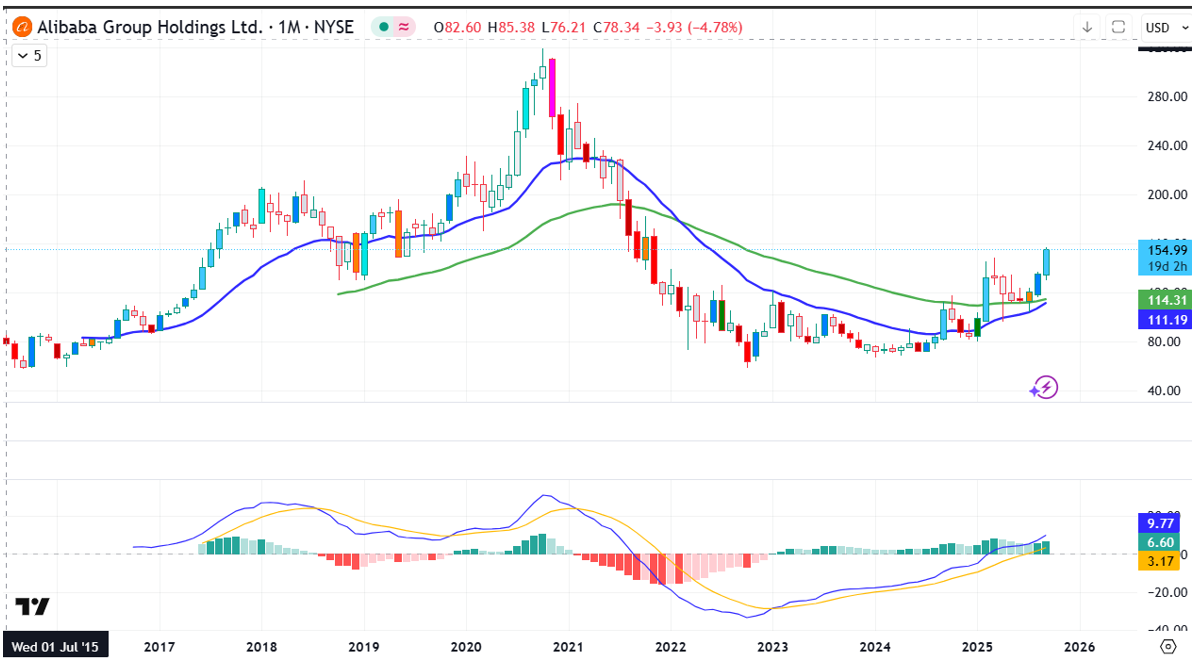
Added to our Tourmaline at $60.10
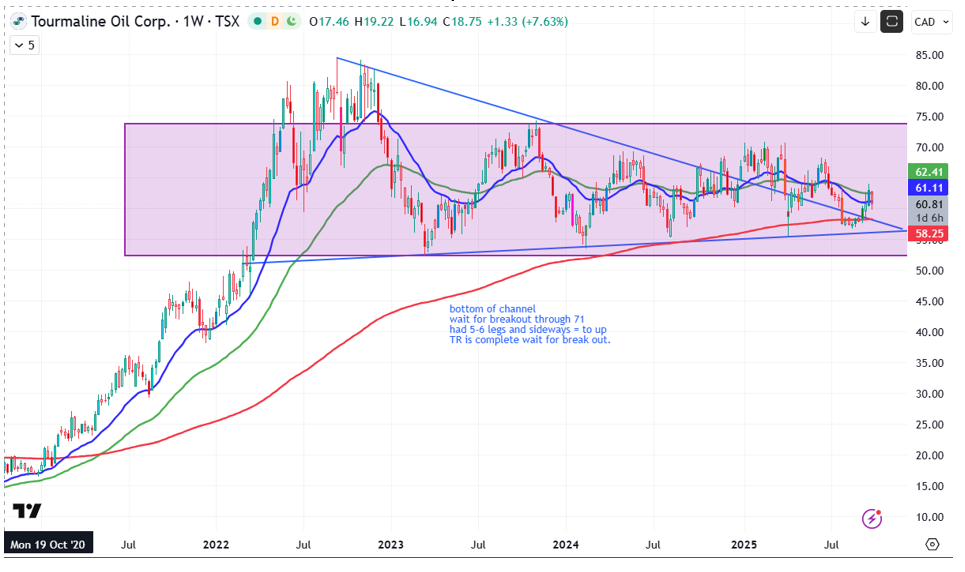
Initiated a new position in Invesco China Technology ETF at $57.69
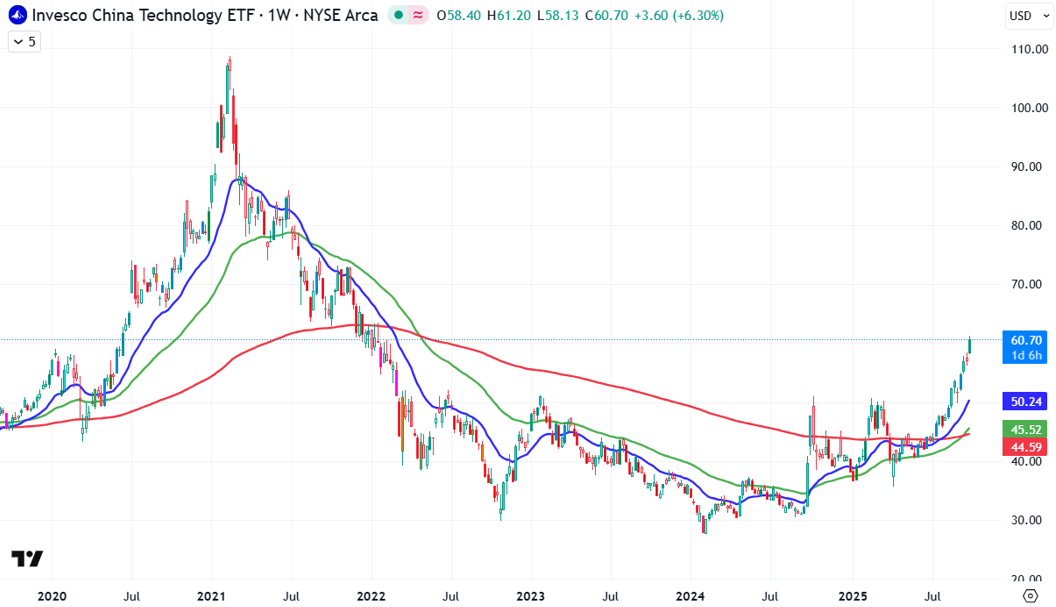
Returns on our 60/40, 70/30 & 80/20 portfolios, before fees:
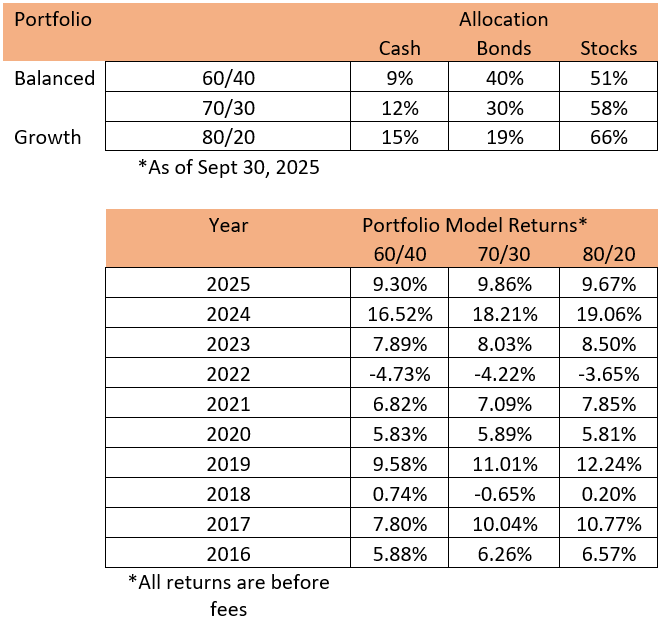
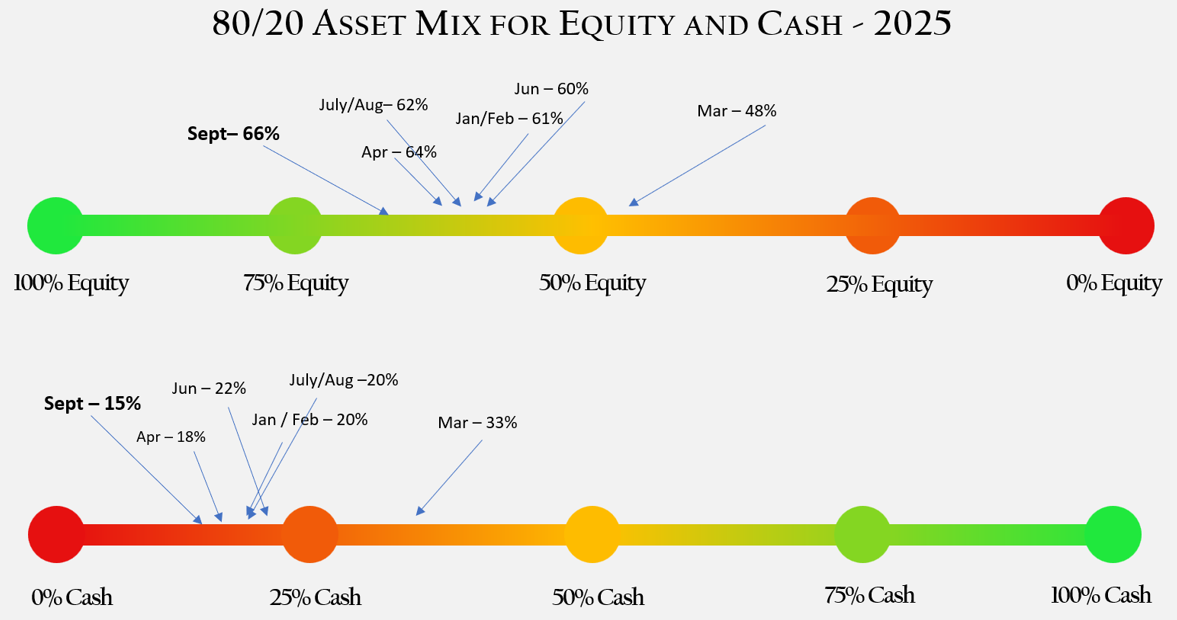
Interesting Charts
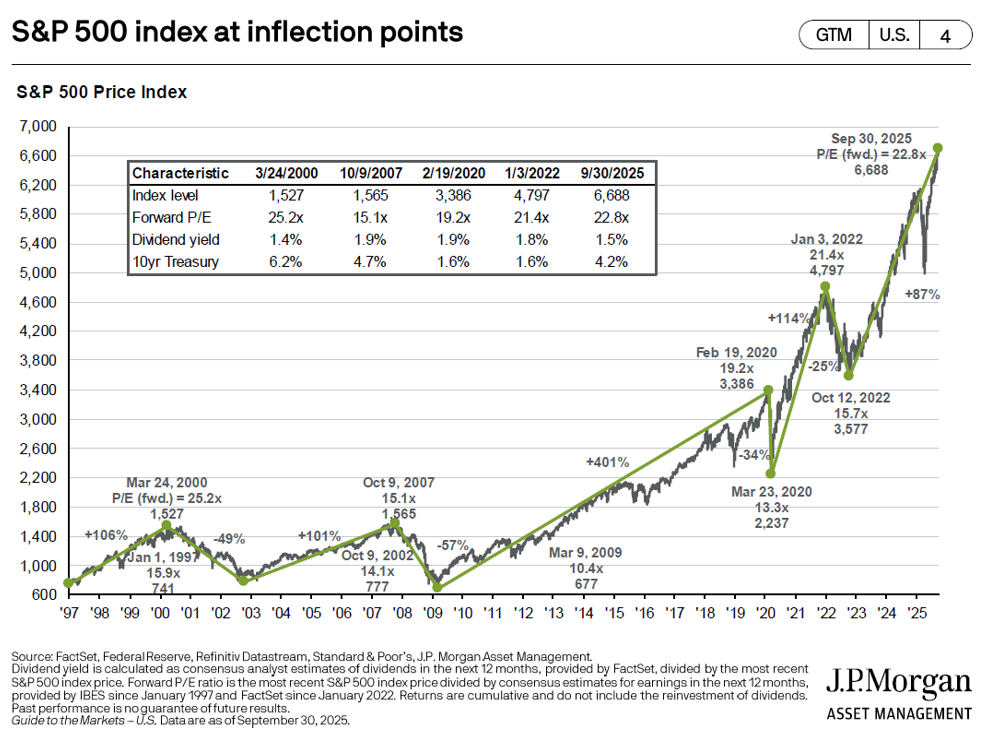
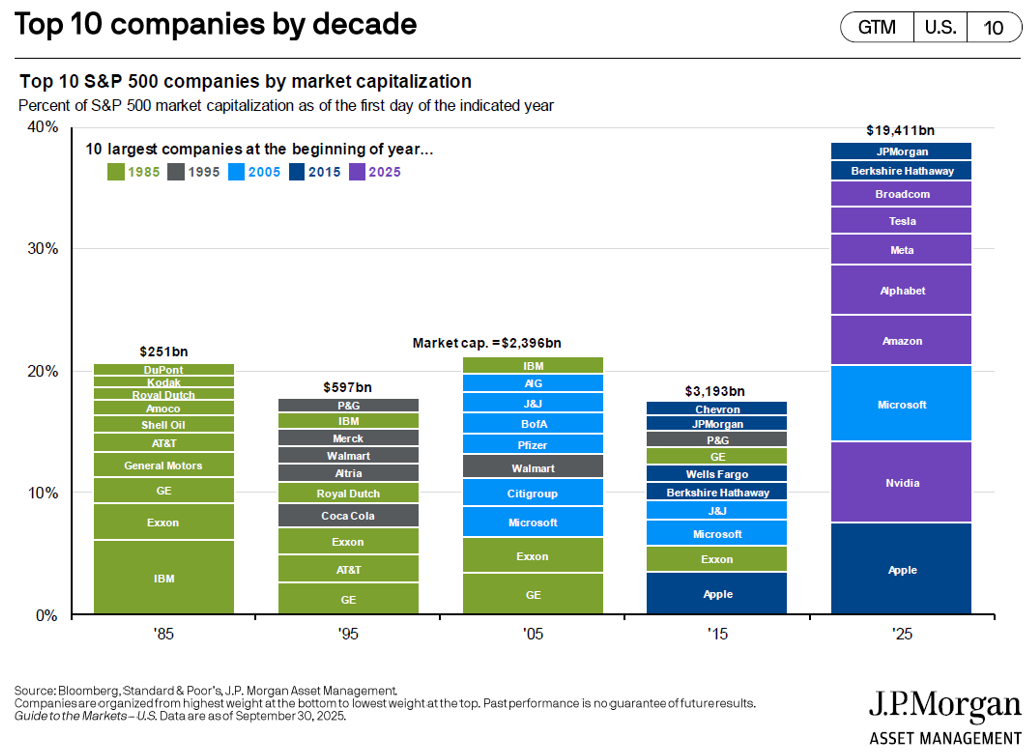
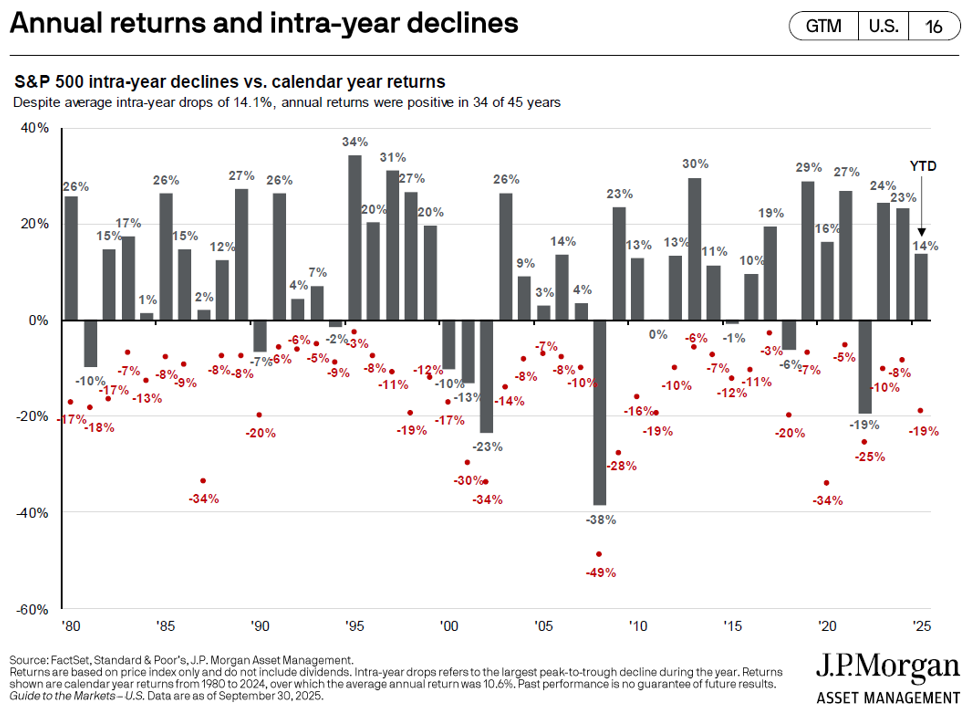
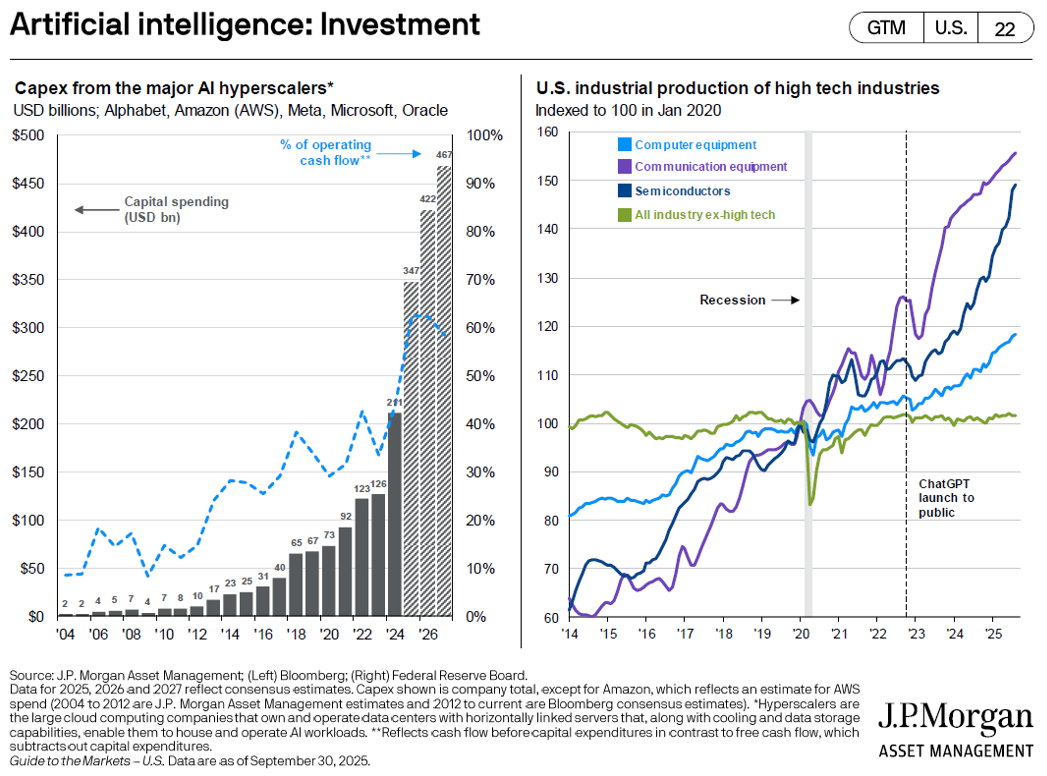
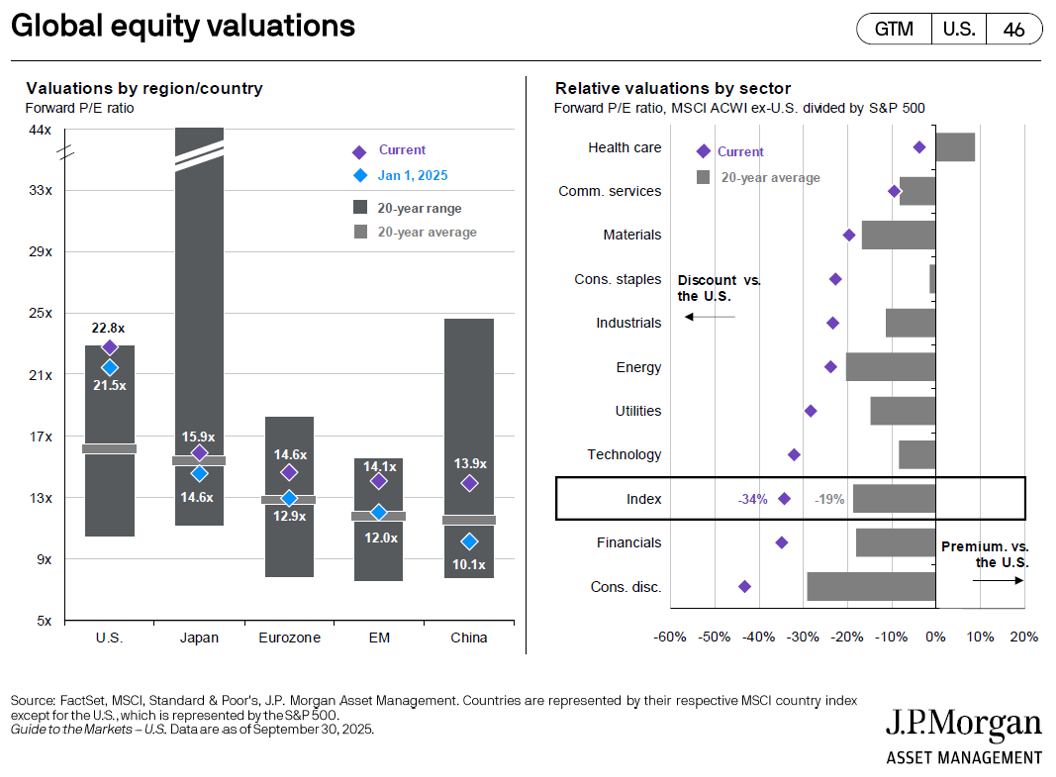
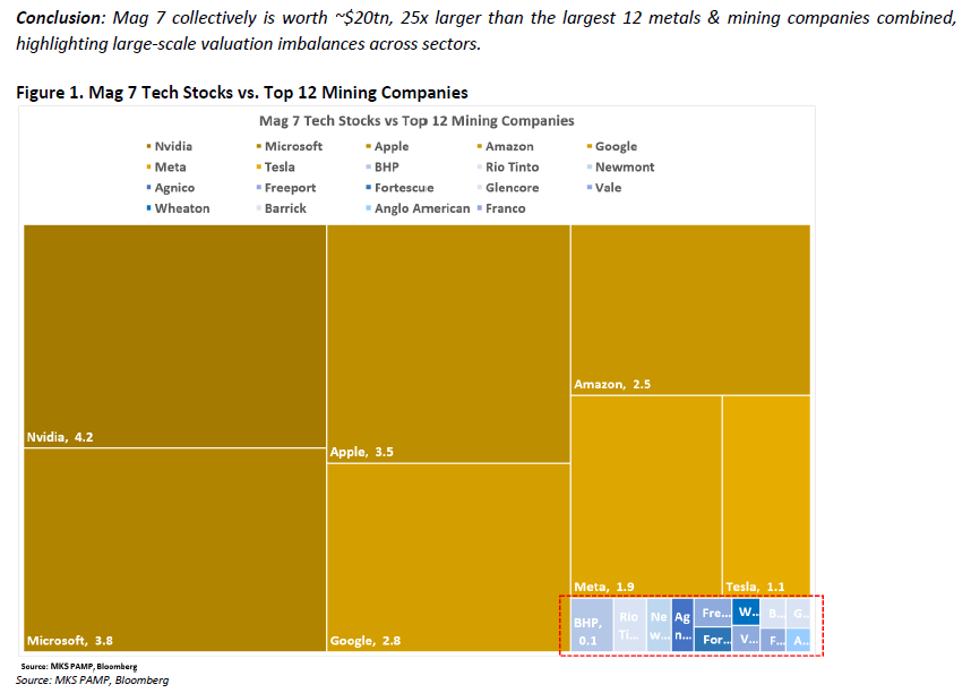
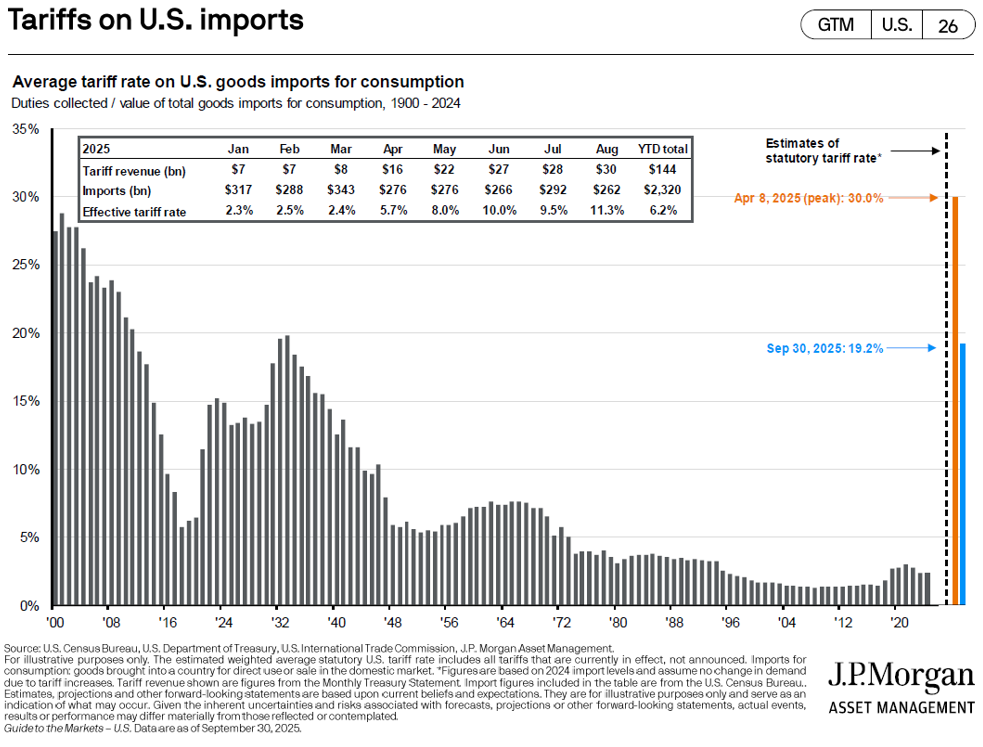
Technical Comment
www.brookstradingcourse.com/analysis/6-bar-e-mini-bull-microchannel/
6-Bar E-mini Bull Microchannel
October 5, 2025 By Andrew
The market formed a 6-bar E-mini bull microchannel on the monthly chart. The next targets for the bulls are the 6900 and 7000 levels. If there is a pullback, they hope to get at least a small second leg sideways to up to retest the trend extreme high (now Oct 3). The bears want a reversal from a higher high major trend reversal and large wedge pattern (Jul 27, Dec 6, and Oct 3).
S&P500 E-mini futures
The Monthly E-mini chart
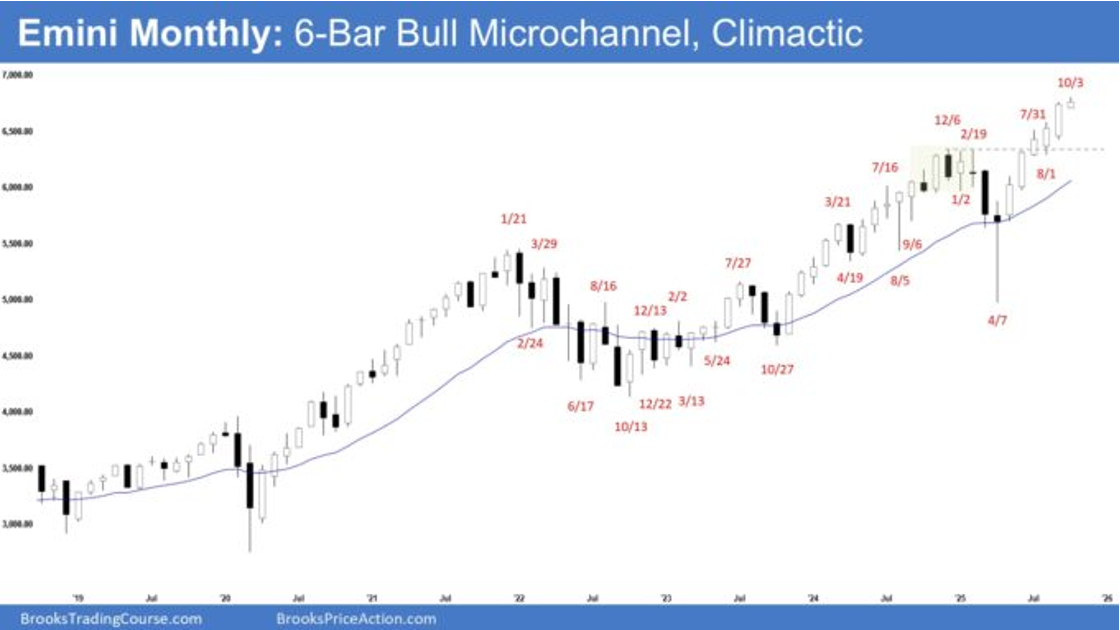
- The September monthly E-mini candlestick was a big bull bar closing near its high.
- Last month, we said traders would observe whether the bull could create more follow-through buying, or if the bears would be able to create some decent selling pressure (bear bars), something they had not done since the April low.
- The market gapped down early in the month but lacked follow-through selling. The E-mini then traded sideways to up for the month, reaching a new all-time high.
- The bulls created a resumption of the trend in the form of a 6-bar bull microchannel. That means persistent buying.
- They reached the 6800-level target on Friday (Oct 3). The next targets for the bulls are the 6900 and 7000 levels.
- If there is a pullback, they hope to get at least a small second leg sideways to up to retest the trend extreme high (now Oct 3).
- The bears want a reversal from a higher high major trend reversal and large wedge pattern (Jul 27, Dec 6, and Oct 3).
- The problem with the bear’s case is that they haven’t been able to create strong bear bars with follow-through selling.
- They need to create consecutive bear bars closing near their lows to indicate they are back in control.
- So far, the move up from the April 7 low is strong, in the form of a 6-bar bull microchannel and consecutive bull bars closing near their highs.
- The market is Always In Long.
- While the move appears slightly climactic and overbought, traders will only be willing to sell aggressively when they see the bears can create strong bear bars with sustained follow-through selling.
- The 6-bar bull microchannel increases the odds that there may be buyers below the first pullback.
- Since September is a bull bar closing near its high, the odds slightly favor October to trade at least a little higher, which it has done.
- Traders will see if the bull can create more follow-through buying, closing October as a strong bull bar.
- Or will the market trade slightly higher, but start forming long tails above candlesticks, or candlesticks with bear bodies (something they haven’t been able to do since the April low) instead?
Millennial Minute
Even though Alberta teachers are on strike, your kids don’t have to stop learning. One topic that is never discussed enough in school is financial literacy. This month’s article provides a few helpful ways you can help educate your children about money and how it will affect their lives.
Click here to read this month's article!
Planning Article
Planning for Gifts to Adult Children
Parents are often interested in making substantial gifts to their adult children to give them a good start in life,
to mark a significant occasion or simply to enjoy seeing their children benefit from their accumulated wealth.
However, you should plan in advance to ensure any gift does not suffer unintended consequences.
Click here to read this month's planning article!


DISCLAIMER:
The opinions, estimates and projections contained herein are those of the author as of the date hereof and are subject to change without notice and may not reflect those of BMO Nesbitt Burns Inc. (\"BMO NBI\"). Every effort has been made to ensure that the contents have been compiled or derived from sources believed to be reliable and contain information and opinions that are accurate and complete. Information may be available to BMO NBI or its affiliates that is not reflected herein. However, neither the author nor BMO NBI makes any representation or warranty, express or implied, in respect thereof, takes any responsibility for any errors or omissions which may be contained herein or accepts any liability whatsoever for any loss arising from any use of or reliance on this report or its contents. This report is not to be construed as an offer to sell or a solicitation for or an offer to buy any securities. BMO NBI, its affiliates and/or their respective officers, directors or employees may from time to time acquire, hold or sell securities mentioned herein as principal or agent. BMO NBI -will buy from or sell to customers securities of issuers mentioned herein on a principal basis. BMO NBI, its affiliates, officers, directors or employees may have a long or short position in the securities discussed herein, related securities or in options, futures or other derivative instruments based thereon. BMO NBI or its affiliates may act as financial advisor and/or underwriter for the issuers mentioned herein and may receive remuneration for same. A significant lending relationship may exist between Bank of Montreal, or its affiliates, and certain of the issuers mentioned herein. BMO NBI is a wholly owned subsidiary of Bank of Montreal. Any U.S. person wishing to effect transactions in any security discussed herein should do so through BMO Nesbitt Burns Corp. Member-Canadian Investor Protection Fund.
BMO (M-bar roundel symbol)” is a registered trademark of Bank of Montreal, used under licence.